Weekly Recap
U.S. stocks declined last week, driven by rising trade policy uncertainty, concerns about growth, and signs of sticky inflation.
Trump announced a 25% tariff on all cars imported into the US. This, along with concerns surrounding a broader economic slowdown and deteriorating consumer sentiment, weighed on stocks, causing all three major indices to fall into the red. The Nasdaq fell 2.5% last week, while the S&P 500 booked losses of 1.5%.
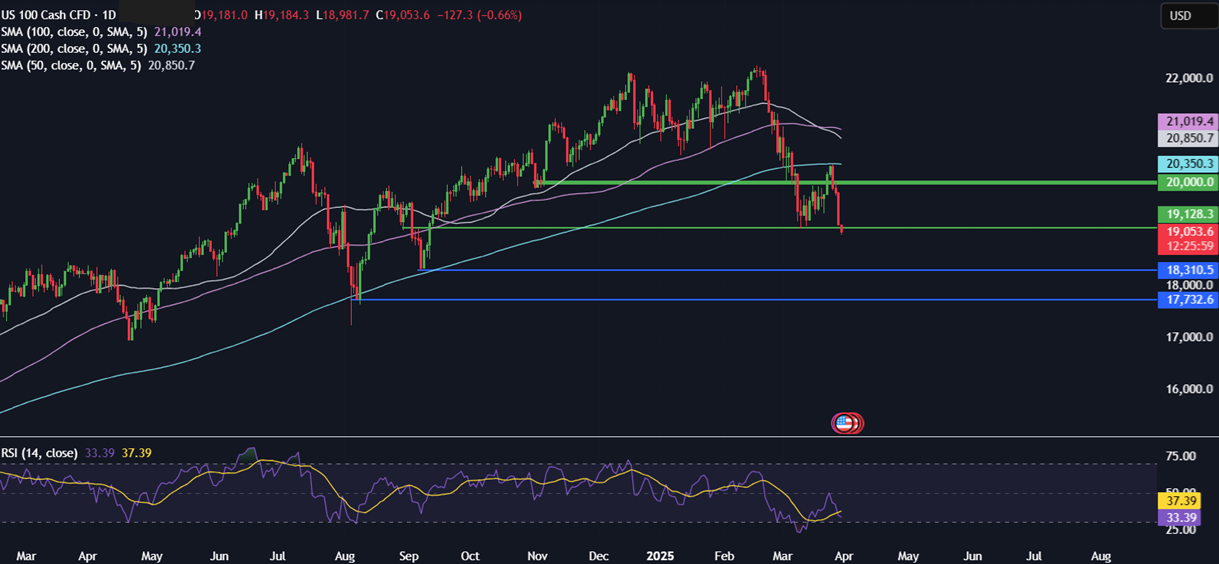
Adding to these fears. US core PCE, the Fed’s preferred gauge for inflation, rose to 2.8% YoY from 2.5%, but personal spending rose just 0.1% after its steepest drop in four years in January.
Gold rose to fresh record highs, approaching $ 3,100, boosted by safe-haven demand.
Trump trade tariffs (Wednesday)
The primary focus this week will be Trump’s trade tariffs, which could set the tone for the market for the coming months. Trump is expected to implement reciprocal trade tariffs starting April 2. It’s not clear how far Trump will go in overturning the current trading system, but comments from the President over the weekend suggest that earlier hopes of a less severe approach were misguided.
Trump has suggested that the US is particularly interested in fairer trade with its trading partners that have a large trade imbalance in goods, such as Mexico, China, Canada, Germany, Japan, and South Korea. Stock indices in these countries could see heightened volatility.
The inclusion of VAT taxes will be a critical consideration for traders as it could result in substantially higher tariff rates and downside risks to the global economy.
Analysts from Goldman Sachs and Deutsche Bank expect reciprocal tariff rates to average around 15%. Depending on the severity of these trade tariffs, they could significantly influence the market’s reaction. The announcement comes as US inflation has risen to 2.8%, and personal spending has been weak, pointing to a stagflation outlook – characterized by weak growth and sticky inflation.
Safe-haven gold has been a clear winner, hitting record highs last week and at the start of this week due to trade uncertainty. However, the Gold is overbought, so buyers should be cautious at these levels.
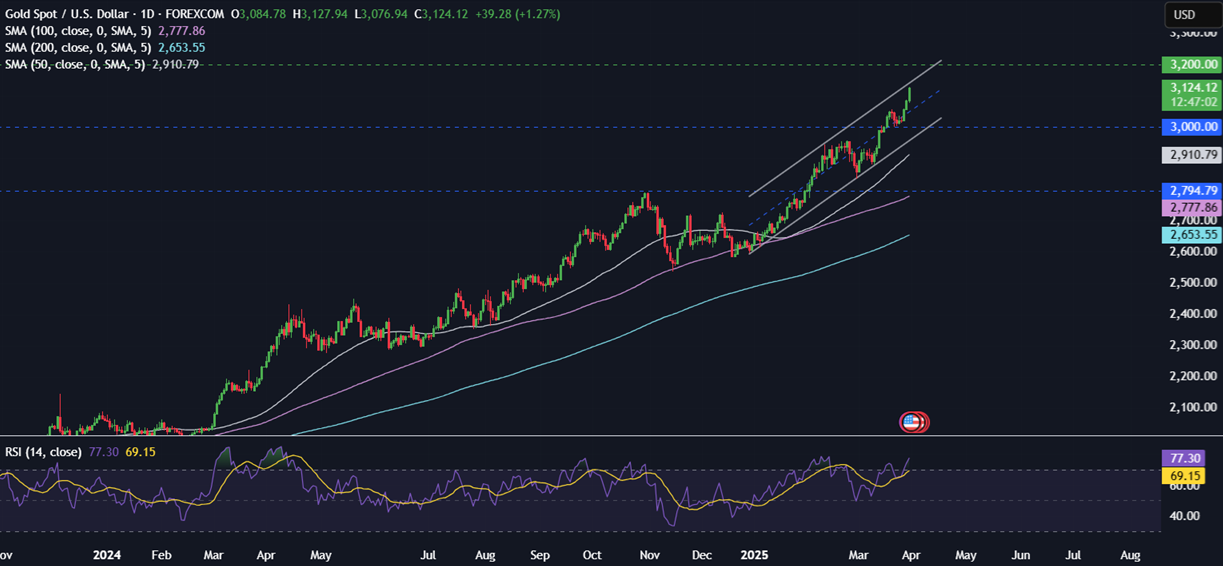
USD/JPY could provide opportunities. The safe-haven yen has rallied at the start of the week, while the USD comes under pressure.
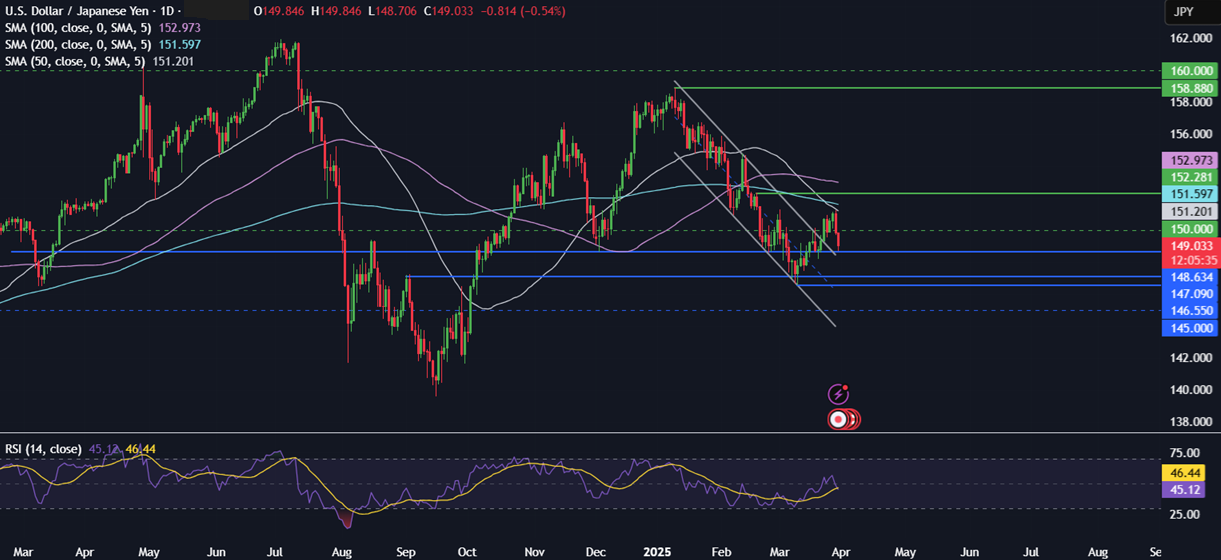
China PMI (Monday)
China’s manufacturing activity expanded at its fastest pace in a year in March, boosted by strong new orders, which gives the Chinese economy some reprieve as it faces an intensifying U.S. trade war. The official manufacturing PMI rose to 50.5 in March, up from 50.2 in February, marking the highest reading since March 2024. The non-manufacturing PMI, which includes services and construction, also accelerated to 50.8, up from 50.4.
The data comes as China has maintained its economic target for this year at 5%, despite U.S. President Donald Trump’s tariff threats. The government has pledged additional fiscal stimulus and debt issuance, as well as monetary easing, to boost domestic demand and cushion the potential impact of a trade war.
The Hang Seng has eased away from its recent multi-year high amid signs of caution in the market ahead of Trump’s trade announcement.
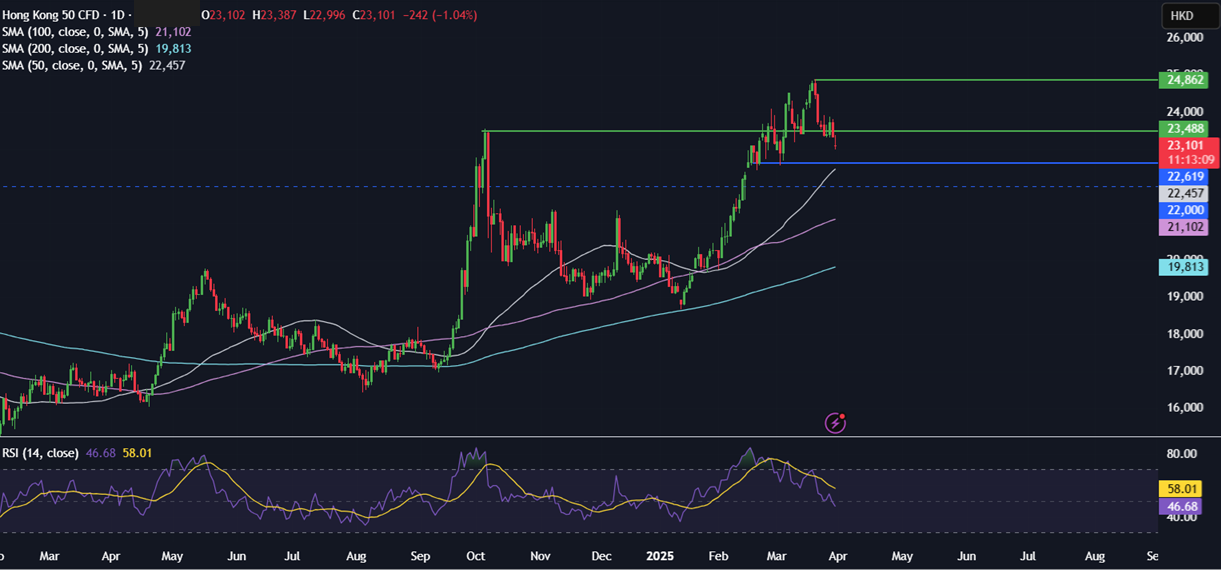
RBA rate decision (Tuesday)
The RBA is expected to leave interest rates unchanged at 4.1% on Tuesday, having cut for the first time in four months in February. The central bank could adopt a more cautious stance on further easing as inflation risks remain a concern. According to the minutes from the latest meeting, the RBA board stated that it is not yet assured that inflation can return to target with a lower cash rate. Policymakers were keen to signal in February’s meeting that the cut should not be interpreted as a commitment to further reductions.
The RBA will want to keep rates unchanged to assess the impact of the February cut and to gain more clarity on the effects of U.S. trade tariffs. Furthermore, Australia is headed for an election on May 3, which is also expected to be a closely fought campaign. A pause would also give the RBA some visibility on the likely fiscal policy setting following the election result.
A cautious sounding RBA could support the AUD/USD, which has fallen from its March high of 0.64.
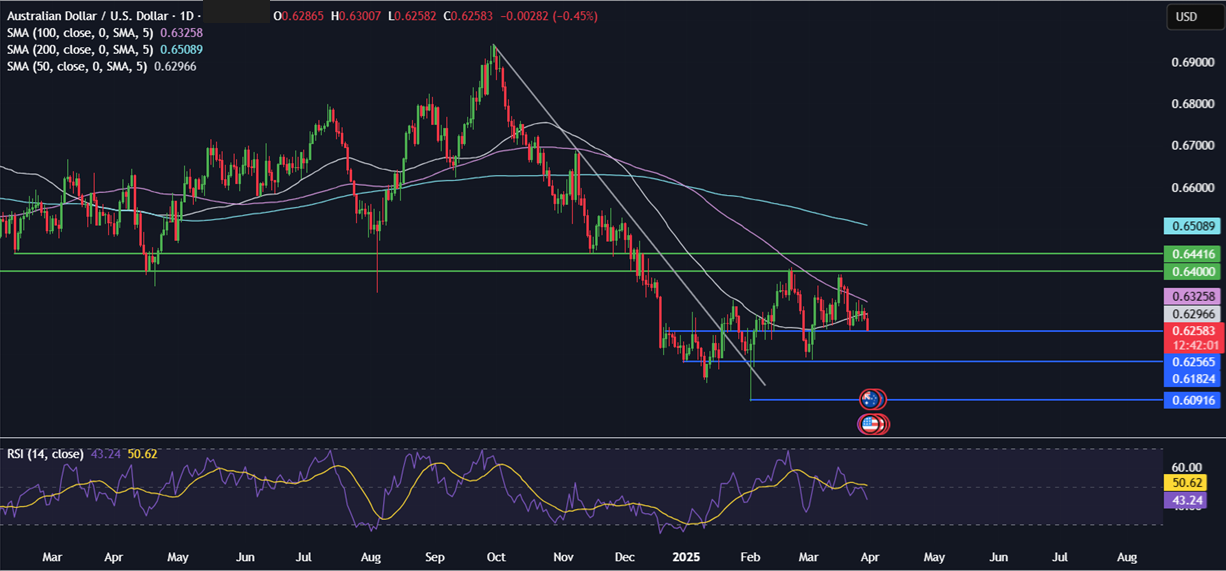
Eurozone CPI (Tuesday)
The eurozone CPI is expected to cool to 2.2% in March, down from 2.5% prior. Core inflation also eased to 2.5% from 2.6%. The data comes after inflation eased to 2.3% in February, its first decline in five months. Core inflation also eased in February, but by less than expected, highlighting the challenges the ECB faces in bringing inflation back to target.
Following a 25-basis-point reduction in March, the market is widely expecting another 25-basis-point rate cut to 2.25% at the April meeting. However, beyond here, the outlook is less certain. Policy makers will be keeping a close eye on border macro risks, particularly surrounding US tariffs.
Hotter-than-expected inflation could lift the EUR/USD, which is currently hovering around 1.08 at the start of the week.
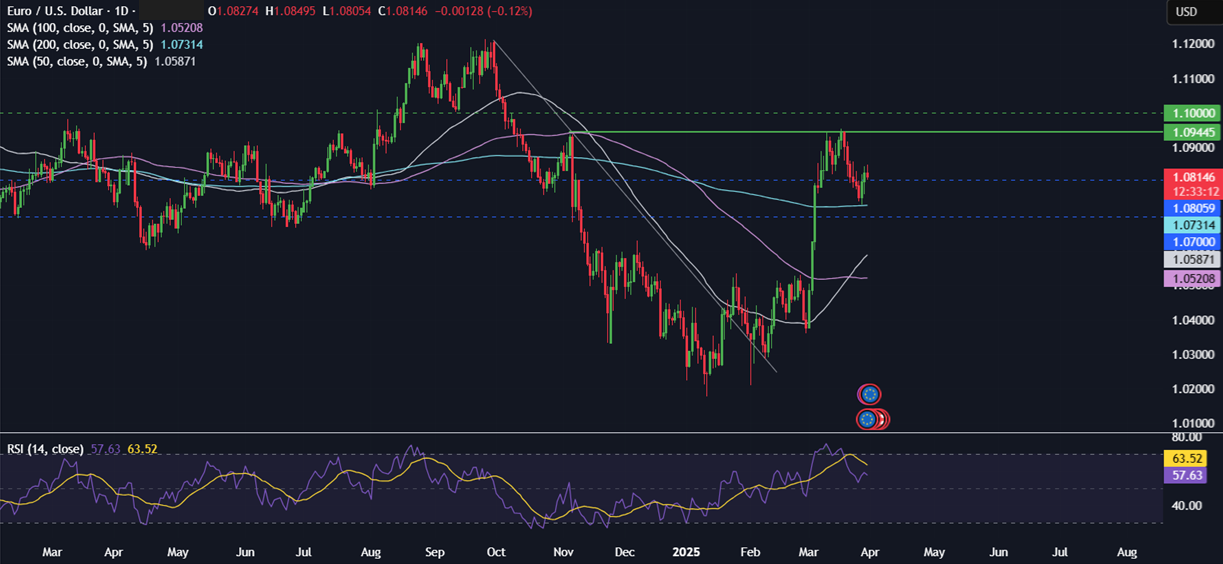
US Non-farm payroll (Friday)
Yes, nonfarm payroll is expected to show that 140,000 jobs were added to the US economy in March, down slightly from 151,000 in February. The unemployment rate is expected to remain unchanged at 4.1%, and average hourly earnings are expected to ease to 3.9% from 4.0% previously.
There will be several key indicators across the week, including ADP payrolls and jobless claims. So far, the US labor market has been showing resilience. I’m fed sees the jobs market is remaining solid whilst not being a source of inflationary pressures.
However, recession fears linked to U.S. trade tariffs mean the market could be more sensitive than usual to any weakness in the labour market.
Softer-than-expected data could add to recession-fueling risk-off trade and pull U.S. stocks lower. The S&P 500 fell 1.5% last week.
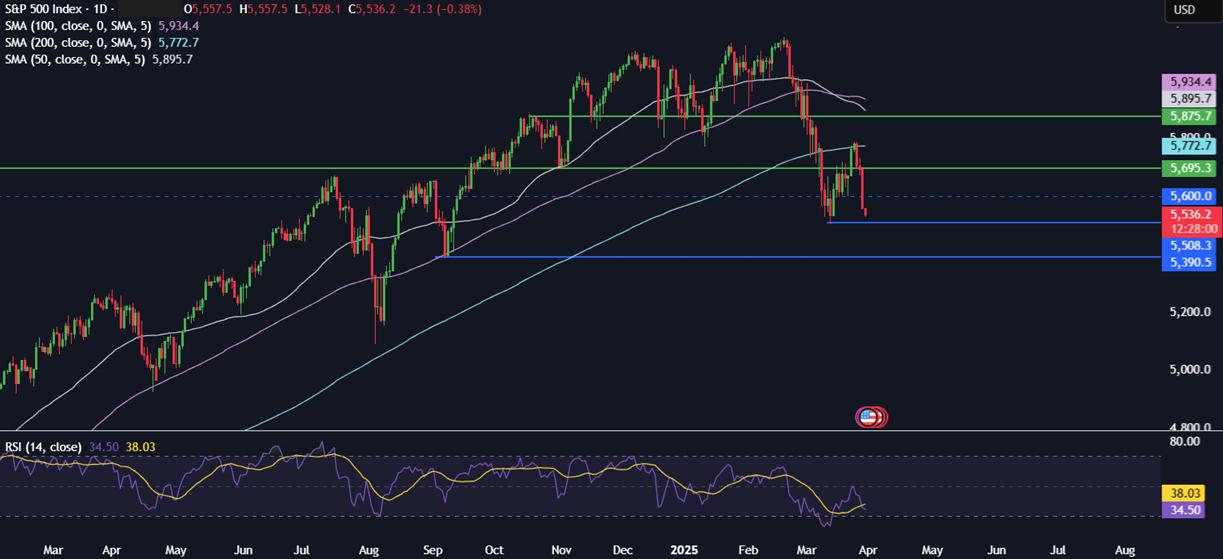
Canada Employment (Friday)
The Canadian employment report is expected to show that 12,000 jobs were created in March, versus just 1,100 in February. Then, the employment rate is set to tick higher to 6.7%, up from 6.6%. While this could indicate a slight weakening in the Canadian jobs market overall, the data is unlikely to have a significant impact given the ongoing uncertainty surrounding US tariff announcements.
Should tariff news be more positive than feared, a bad Canadian jobs report could quickly be overshadowed, and vice versa, a negative trade news could overshadow any positive employment numbers.
USD/CAD trades in a familiar range as weakness in the loonie is offset by weakness in the USD.
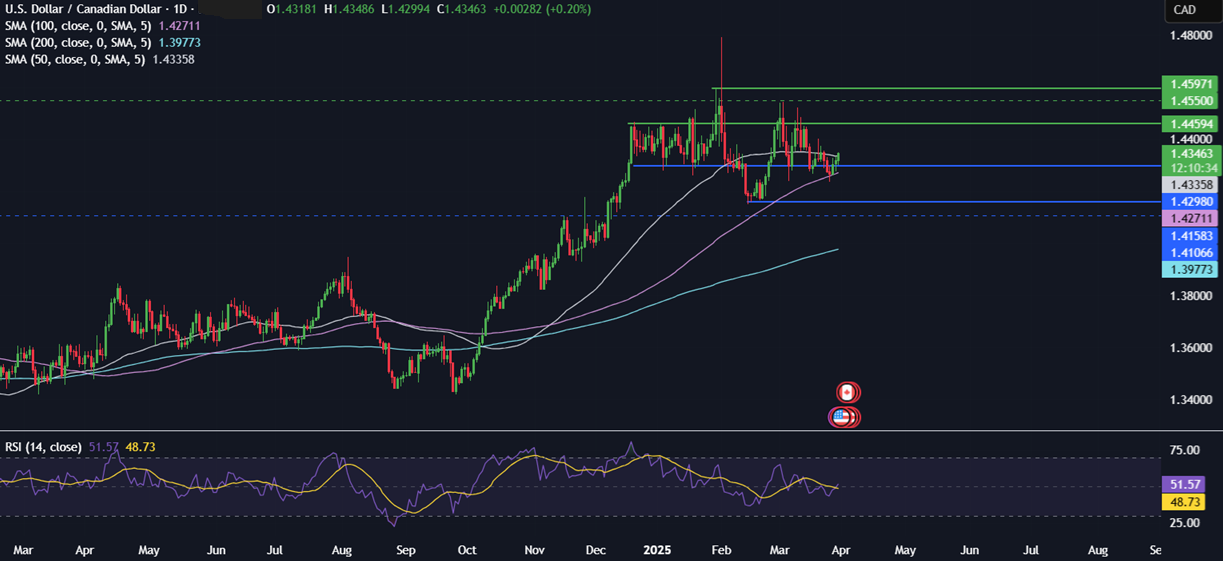
The content provided here is for informational purposes only. It is not intended as personal investment advice and does not constitute a solicitation or invitation to engage in any financial transactions, investments, or related activities. Past performance is not a reliable indicator of future results.
The financial products offered by the Company are complex and come with a high risk of losing money rapidly due to leverage. These products may not be suitable for all investors. Before engaging, you should consider whether you understand how these leveraged products work and whether you can afford the high risk of losing your money.
The Company does not accept clients from the Restricted Jurisdictions as indicated in our website/ T&C. Some services or products may not be available in your jurisdiction.
The applicable legal entity and its respective products and services depend on the client’s country of residence and the entity with which the client has established a contractual relationship during registration.




